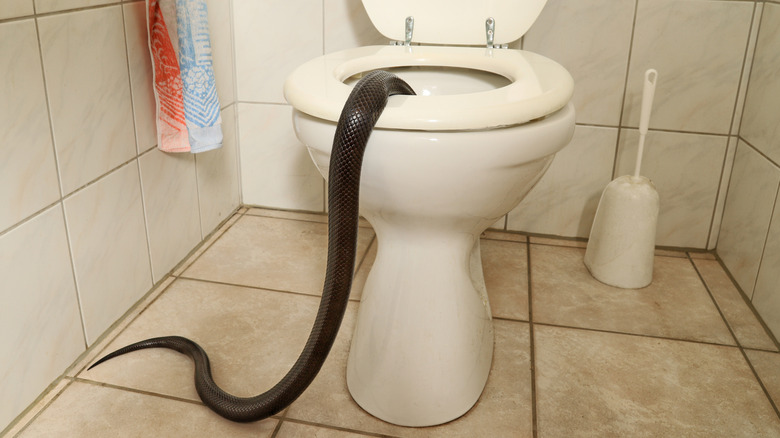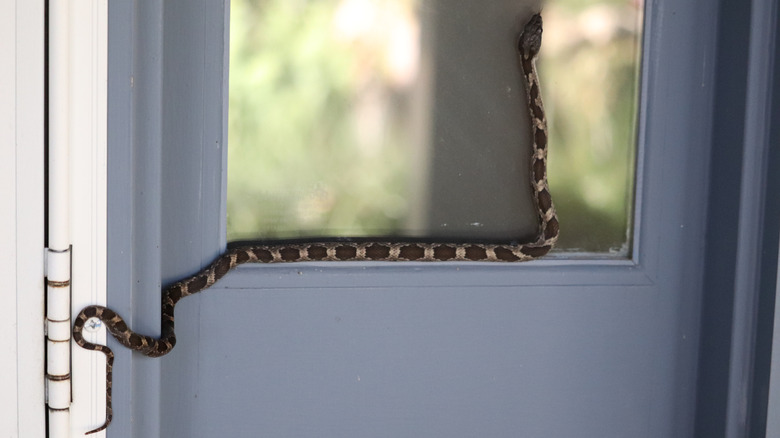How Snakes Are Able To Get In Through The Toilet And What You Can Do About It
You might think a kid's toy or giant clog are the worst things you can find in your toilet bowl. And you'd be right, unless you're among the unfortunate few who've snuck off for a quick bathroom break only to find a snake slithered inside or wrapped around the seat or tank. Instead of panicking, your best course of action is to stay calm, shut the lid, close the door, and call an emergency pest control service or your local animal control agency for help safely removing it. But whether you find a benign garter snake or a venomous rattlesnake, it's important to determine how it got there and what you can do to prevent another snake from slithering into your toilet ever again. From ensuring your septic tank lid is snug to sealing your ventilation pipes, there are several steps you can take to eliminate points of entry for snakes to keep them out of your toilet.
Snakes seek out cool, dry places to avoid overheating during the summer months. Their complex anatomy allows them to climb, swim, and slink into extremely tight spaces. These traits mean that certain spots in your home, like the dark area behind your toilet or the cool water inside it, are particularly attractive hiding places. Snakes are just as likely to quietly creep into your house through an open door as they are to slither inside your septic tank and through the pipes connecting it to your toilet. Because they are capable climbers, snakes can also make their way onto your roof where they can easily access the ventilation pipes connecting to your home's plumbing fixtures.
Secure all potential entry points to keep snakes out of your home
Keeping snakes out of your yard is a great way to reduce the likelihood that one of the reptiles will end up scaring the crap out of you in the bathroom. Keeping your grass cut and vegetation neat will help. But there are no foolproof chemical repellents to keep snakes away. And, it can be almost impossible to completely remove all potential food and shelter sources no matter how hard you try. So, to really reduce the chance a snake can get into your home, start by securing your doors and windows especially if you like to leave them open to get more fresh air inside. Seal any holes and make sure your screens are in good repair.
Next, you'll want to make sure there are no other openings. There are three important places to secure. First, get familiar with how your home's septic tank works and make sure the lid is on tightly. If a snake works its way into your septic tank, it can move through the drain pipes connecting it directly to your toilet. A tight lid all but eliminates this possibility. Second, cover the ventilation pipes on your roof with heavy duty mesh to create an impenetrable barrier. This requires risky work, so you may want to consider hiring a handyperson or pest control professional to do the job. Finally, whether you're worried about snakes or other creatures like rats or frogs ending up in your toilet tank, consider installing a multi-flap valve. The one-way valve allows your toilet to flush and release water, but then quickly shuts to completely cut off access from any curious critters.

